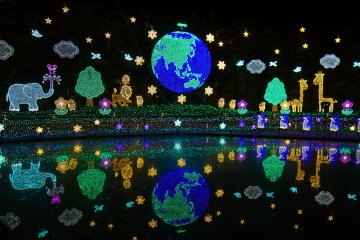
Ashikaga Flower Park Illumination 2025-2026
Jaime WongThe number one award winning illumination display in Japan found at Ashikaga Flower Park near Tokyo.

This flower theme park is located in Ashikaga, Tochigi. The seeds of its creation were planted in the 1920s when a landowner planted a wisteria seed that would one day become the centerpiece of this park. In 1968, that garden was renovated and became Hayakawa Farm, the predecessor to Ashikaga Flower Park. The wetland nature of the soil proved conducive to growing many flowering plants and even provided lovely waterfront areas for visitors to enjoy.
Today, this urban area enjoys vibrant flowers year-round thanks to this fantasy-like theme park. From azaleas to pansies, and roses to wisteria, Ashikaga Flower Park has blooms to dazzle everyone. The main annual event is there Fuji no Hana Monogatari, or Wisteria Flower Story, when the Great Wisteria tree blossoms from mid-April to mid-May. The brilliant colors draw in huge crowds to play beneath the tunnels of wisteria flowers and marvel at the long tendrils of flowers. CNN even compared this event to the Tree of Souls from the hit movie Avatar.
There are yearly events during the off-seasons. Visitors can be sure to enjoy the park no matter when they visit. The park is always open. However, the park is closed on the 1st Wednesday and Thursday in February and on December 31st. Admission is permitted until 30 minutes before closing. Admission varies by season and can range from 300 yen to 1,900 yen during peak events. For accurate seasonal prices, it’s recommended to visit the Ashikaga Flower Park website.
Spreading over a space of 600-tatami, this incredible Great Wisteria is more than 150 years old. It’s a fantasy-like sight when the wisteria blooms from pale red, purple, white, and yellow. Visit this area and feel like you’ve been transported to another world.
To get to the Ashikaga Flower Park take the JR Utsunomiya Line, JR Shonan-Shinjuku Line, and transfer to the JR Ryomo Line. Get off at Tomita Station, one station before Ashikaga Station, from there it is a 15-minute walk to the park.

The number one award winning illumination display in Japan found at Ashikaga Flower Park near Tokyo.

The aroma of wisteria blossoms is in the night air. The din and bustle of the daytime has quieted down, and everyone is impressed by the silent beauty of this light up.
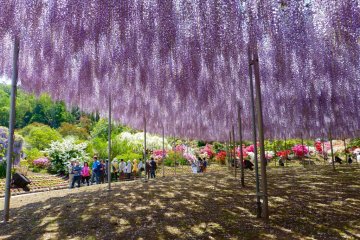
Walking through an 80-meter tunnel of white wisteria, or just standing under the 1000 square meters of a purple wisteria trellis, you will become a slave to this beauty.

Ashikaga Flower Park is famous for many fuji trees and other flowers that are blooming in May, so the park looks like paradise.

Ashikaga Flower Park is home to the incredibly beautiful wisteria vines that hang from 130-year old trees. Come and see why this garden was chosen as one of nine dream destinations by CNN in 2014!

Light-up at Ashikaga Flower Park: Although it is very famous for the breathtaking wisteria in May, it also features gorgeous illumination in winter.
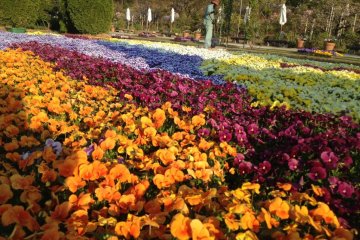
Ashikaga Flower Park in Tochigi has eight floral seasons for the flower enthusiast to enjoy year round.
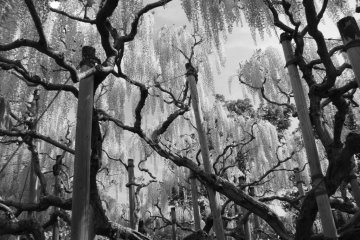
Tochigi Prefecture's Ashikaga Flower Park delighted me in a number of ways. The special treat, of course, are the gorgeous wisteria ("fuji") in May.
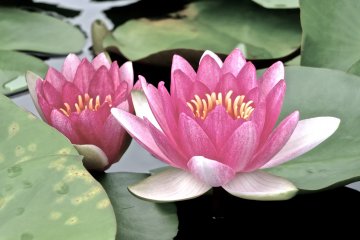
Ashikaga Flower Park is known for its beautiful Wisteria in spring. But in summer, the featured flower is the Water Lilly.
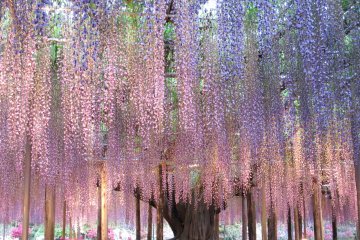
Visit the Ashikaga Flower Park to view Wisteria, also known as the Fuji flower. It is an interesting place for people who like flowers and gardening as you can view great variety of flowers, as well as purchase some.

The number one award winning illumination display in Japan found at Ashikaga Flower Park near Tokyo.

Ashikaga Flower Park, wisteria blossoms during the Golden Week holidays—a photo story.
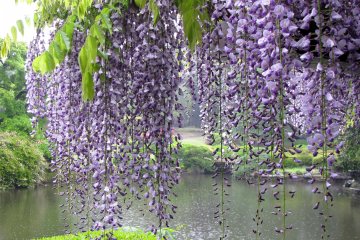

Mahler's Parlor is a hip, unique pub that has the feel of being in someone’s living room.

Aspecial exhibition taking place at the Gunma Museum of Art looks at the works of Yumeji Takehisa (1884 - 1934), a Japanese poet and painter who was renowned for his bijin-ga (beautiful women) artworks.

One of Japan's notable watercolor painters was Tojiro Oshita (1870-1911). A special exhibition taking place at the Gunma Museum of Art delves into Oshita's works, as well as other Japanese watercolor artists such as Katsumi Miyake and Hiroshi Yoshida.